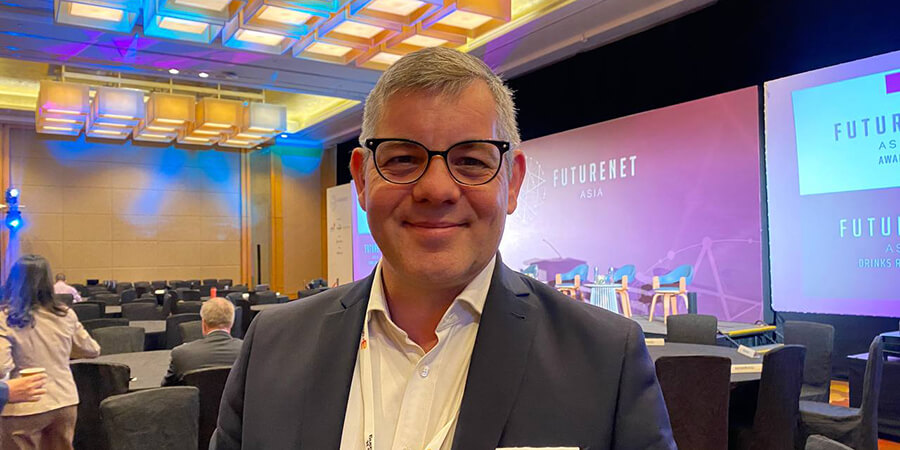During the FutureNet 2023 conference, held at Marina Bay Sands in Singapore on October 18-19, 2023, Telecom Review Asia had the privilege of interviewing Sam Keys-Toyer, Head of Business and Portfolio Development, Managed Network Services at Ericsson, to delve into the key challenges facing service providers in implementing data-driven solutions in their telecom networks. Keys-Toyer offered valuable insights into Ericsson's forward-thinking approach and its contributions to the evolving landscape of telecom networks.
What are the key challenges that service providers face when implementing data-driven solutions in their telecom networks?
The key challenge that providers face when implementing data-driven solutions in their telecom networks is the need to focus on their data strategy and consider how their business processes need to evolve to achieve desired digital business outcomes. Up-Skilling the organization in telecoms network engineering and data proficiency is important in this process. Once these foundational steps are in place, providers can explore techniques such as automation, machine learning, advanced AI, and analytics to enhance their processes and become fully data-driven. Based on previous experiences with service providers globally, we can say that this approach can lead to achieving results relatively quickly.
How does Ericsson employ data-driven strategies to enhance energy efficiency and sustainability in increasingly data-intensive telecom networks?
There are various ways that the company focuses on energy efficiency across its products and services. One example is virtual drive testing, where Ericsson can optimize networks without physically driving around and wasting fuel. We also have energy-saving features in our products and solutions and use AI to shut down unnecessary services and optimize the usage of power across the radio site without impacting customer experience. Ericsson are usingdata-driven processes to remotely fix issues and prevent unnecessary site maintenance trips, saving time and energy. This approach has seen a global reduction of site visits by 12% in the last year and taking into account all the initiatives described above, can save in the range of 5 tons of carbon dioxide per site, per year, offering significant energy-saving opportunities.
As the industry moves towards 5G and beyond, how does Ericsson support its clients in managing next generation networks?
Ericsson offers a range of operational support systems (OSS) products and network management products for 5G environments. Ericsson also provide services for rolling out, deploying, planning, optimizing, operating and maintaining 5G networks. The focus is on digitalization and using data effectively to improve accuracy, efficiency, and speed of service delivery. The adoption of 5G is faster in Asia compared to other areas, making it a trailblazer in monetizing and utilizing 5G in industry 4.0. Ericsson aims to support this by offering services that bring capabilities to market faster, ensuring a superior customer experience, and lowering the cost of ownership. Ericsson also prioritizes sustainability by reducing its carbon footprint in network environments and manufacturing equipment.
What is Ericsson's vision for intent-based operations?
Intent-based and autonomous networks are crucial for the evolution of network infrastructure. The purpose of intents is to simplify how services are defined and operated on a network. The goal is to have machine autonomy in managing networks, especially as new services are introduced in a 5G environment. This will help manage service complexity and variation. The use of intents is part of the autonomous journey towards a simplified and closed-loop environment, allowing for almost zero-touch or autonomous operation of services. However, the challenge lies in ensuring that machine reasoning can replicate human capabilities in managing conflicts and compromises. Building confidence in network operations will be a gradual process.
In the context of operational transformation, how does the shift from data-driven to intent-driven operations improve the telecom network’s ability to address varying service demands within ‘The Matrix’ of telecom networks?
The main difference between a data-driven approach and intent-based operations is that the former allows for autonomy and works well in scenarios with limited-service variation and geographical differences. However, intent-based operations aim to handle more service variation and guarantee specific service level agreements (SLAs), especially in the business-to-consumer context. In intent-based operations, customers may require services for a short period of time, such as a television company needing quality service for a specific event. Intent-based operations involves translating customer requirements into a specific service template in the network, while ensuring it does not conflict with other services in the same area. This approach relies on machine reasoning to manage conflicts and automatically predict demands and manage the relevant resources.






